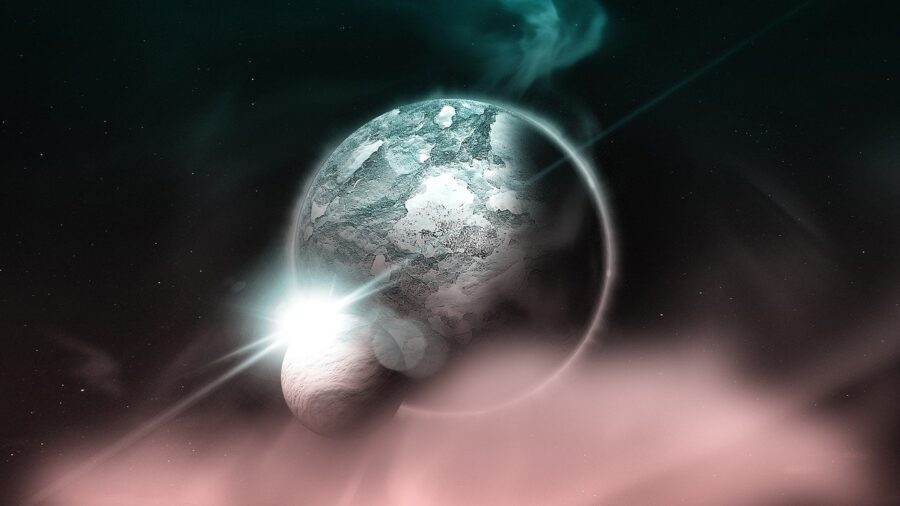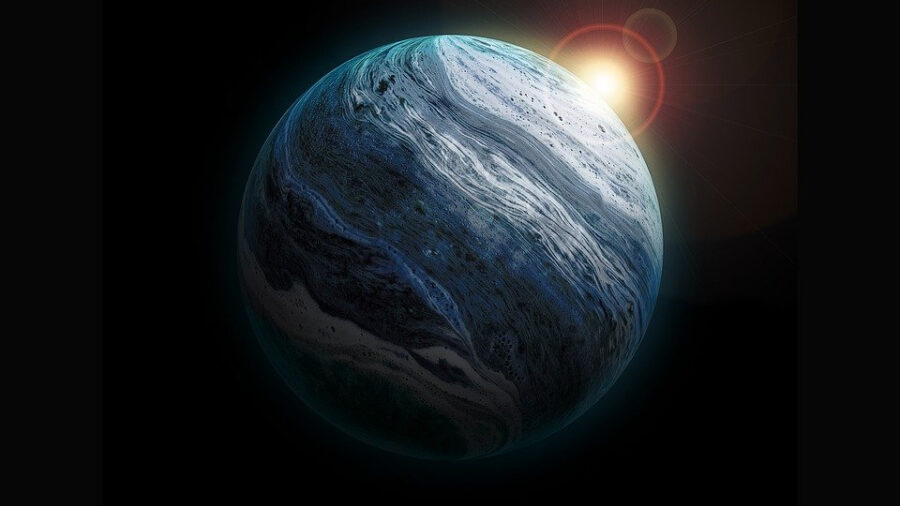Scientists Find Planet Denser Than Steel, How Is It Possible?

Astronomers have located a new planet with a density greater than steel. According to ScienceAlert, the exoplanet has strange characteristics that could be the result of a massive collision. At almost twice Earth’s density but slightly smaller in size than Neptune, TOI-1853b seems to have a high-rock composition, making its origin difficult to understand according to the usual paths of planet evolution and formation.
A newly discovered “steel planet” is baffling researchers as it’s denser than Earth.
A steel planet would be strange enough, but Luca Naponiello, a physicist at Italy’s University of Rome Tor Vergata and the University of Bristol in the UK, leads a team that has come to believe the planet used to be the core of a gas planet that experienced an impact that caused its atmosphere to dissipate.
Calling the exoplanet “very surprising,” Jingayao Dou, a physicist at the University of Bristol, says that planets that contain the amount of rock seen in TOI-1853b usually have about the density of water and become gas giants. The team’s work has demonstrated that the planet’s odd characteristics could emerge from a giant collision.
Calling TOI-1853b a steel planet is a bit of a misnomer since its density is higher than that of steel; they say it is likely that a lighter atmosphere was stripped away along with water after an “extremely energetic planet-planet collisions during its formation.”

As an exoplanet, it is quite rare, existing in a space called the Neptunian desert, where a planet around Neptune’s size orbits its star at a close range. Only around 5,500 exoplanets in this category have been discovered so far, meaning that understanding the rarity of this phenomenon could provide greater insight into how planets are formed and how they develop over time.
The steel planet is believed to have once been part of a gas giant.
At 3.46 times the radius of Earth, the denser-than-steel planet TOI-1853b is only .42 Earth radii smaller than Neptune but otherwise has next to nothing in common with that planet. Its orange dwarf star is about 20% smaller than our sun, and the exoplanet circles it once every 1.24 of our days. While Neptune’s mass is 17.15 times that of Earth, TOI-1853b is an incredible 73.2 Earth masses, giving it a calculated density of 9.7 grams per cubic centimeter.
For context, consider that steel and iron both have densities of around 7.87 grams per cubic centimeter, while a planet like Neptune has an average density of 1.64 grams per cubic centimeter. Neptune’s more extensive and thicker atmosphere accounts for its much lower density, but the extreme density of TOI-1853b indicates it must contain less atmosphere and more materials of greater density. This odd composition led Naponiello and his team to conduct simulations, through which they sought to uncover clues to TOI-1853b’s origins.
Scientists believe that TOI-1853b, the “steel planet,” is the result of a catastrophic cosmic collision.
According to their research, two already massive and still-forming planets likely collided, causing the ejection of their atmosphere and leaving behind the steel planet. University of Bristol physicist Phil Carter explains that their findings indicate one of the planets would need to be rich in water and sustain an impact in excess of 75 kilometers per second to produce such extreme density. The team, whose research was published in Nature, is planning further work to determine the likelihood of such a collision.












